A list of Chicago Landmarks that shouldn’t be missed. This list includes historic landmarks and architectural wonders. Many of these landmarks are located within The Loop neighborhood and are on or near the Magnificent Mile.
The official list of Chicago Landmarks includes hundreds of homes, office buildings, museums, churches, historic sites, neighborhood districts, and even firehouses. The below list includes some of the most famous landmarks on the official list and some spots locals consider to be landmarks.
Chicago Landmarks
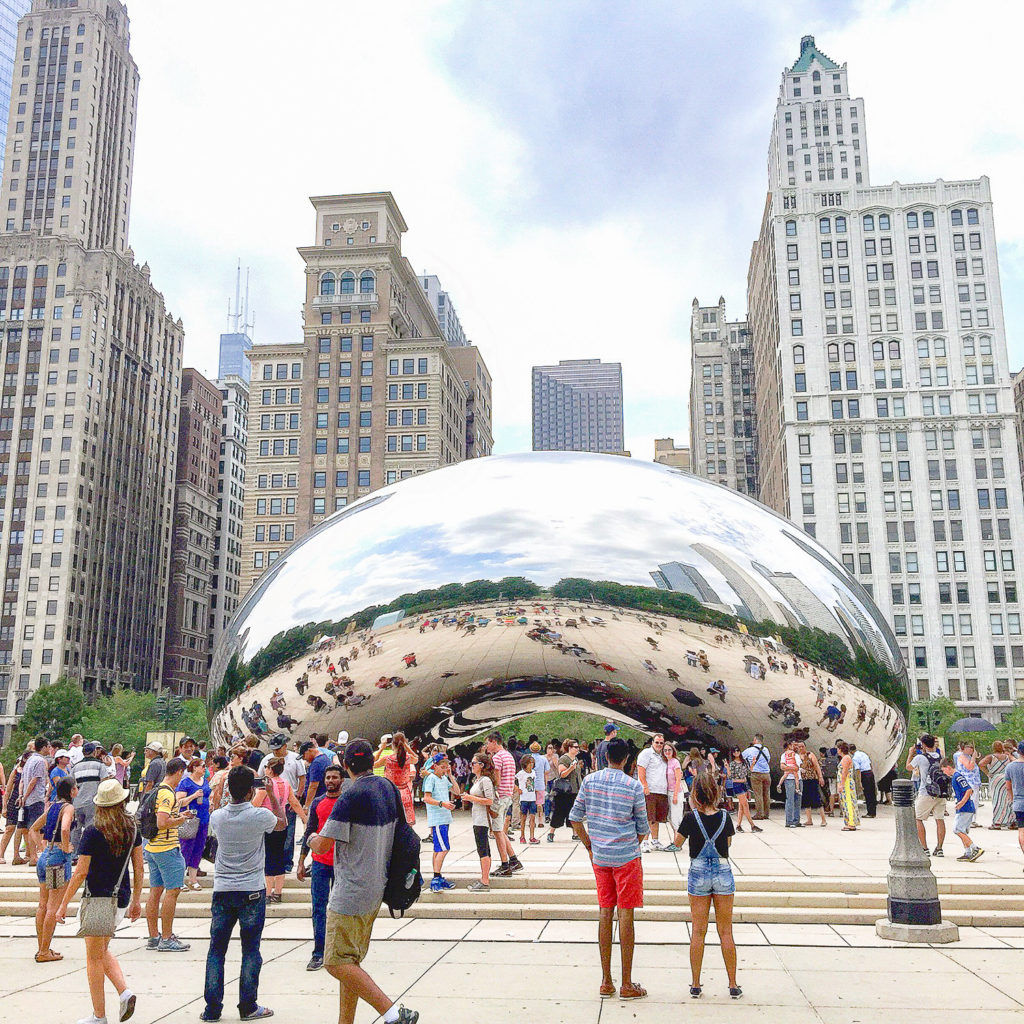
Cloud Gate (The Bean)
This sculpture by Anish Kapoor, titled Cloud Gate, is the centerpiece of Millennium Park in The Loop. Even though the sculpture was completely relatively recently, in 2006, it has become one of the most iconic symbols of Chicago. The surface of the sculpture is highly reflective allowing visitors to see their reflection and the reflection of the skyline behind them.
Cloud Gate is a major tourist attraction, so expect there to be a crowd unless you get there very early.
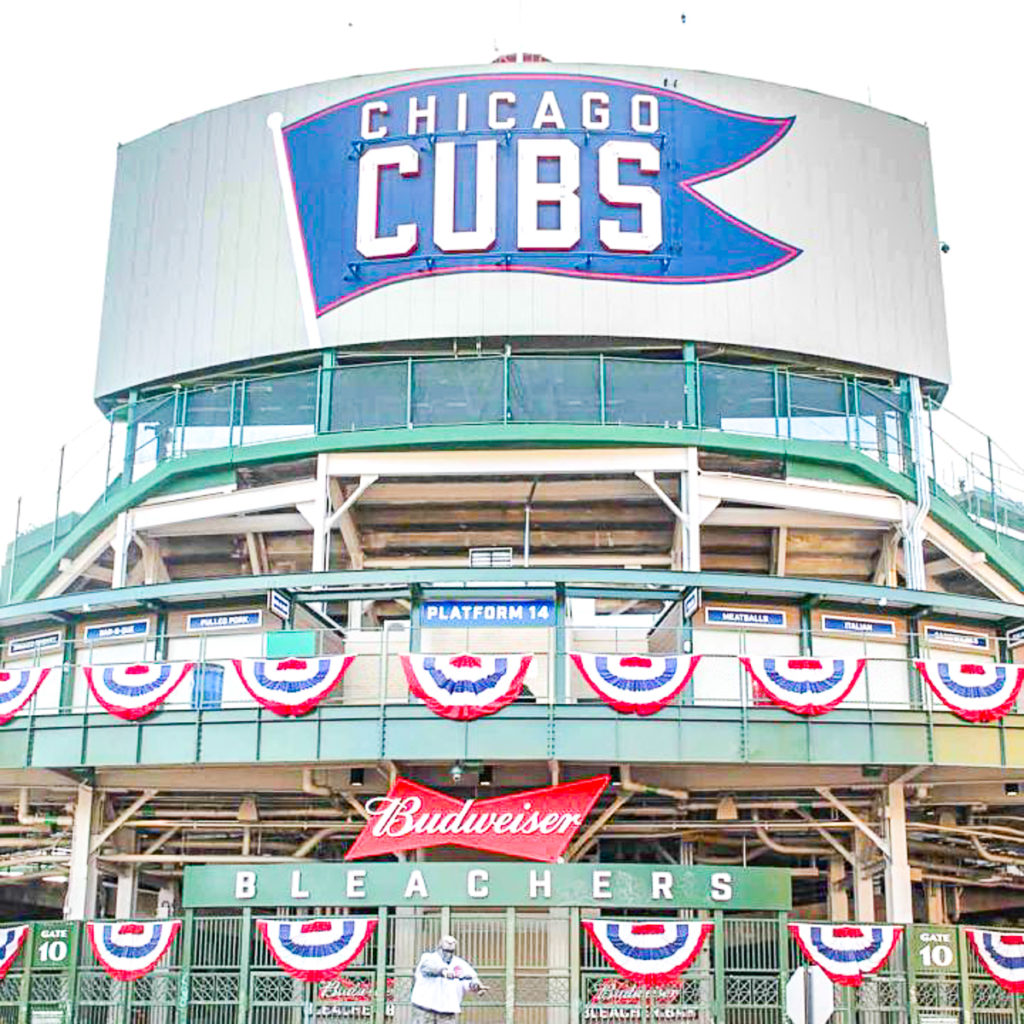
Wrigley Field
Wrigley Field is the second oldest baseball stadium in America, and arguably the most beautiful. The stadium was built in 1914. It was first called Weeghman Park and was the home of the Chicago Whales. After that team folded, the Cubs took over the stadium and it was renamed Wrigley Field.
The stadium is known for its ivy covered outfield wall and its scoreboard that is updated by hand. Some of the seats have views of Lake Michigan.
There are several ways to see Wrigley Field. You can buy tickets to a game or a concerts, you can go on a tour, or you can just go view the outside anytime. On Saturdays in the summer, it’s fun to grab a meal outside nearby. If you have a view of the screen in front of the stadium you will get to watch couple after couple take wedding photos.

The Wrigley Building
This skyscraper with a clocktower located at 400-410 North Michigan Avenue was built in 1920 to house the Wrigley company’s headquarters. It’s one of the most architecturally beautiful buildings in Chicago. One of the best views of the Wrigley Building can be seen from the rooftop of LondonHouse.
Willis Tower (Sears Tower)
Still the tallest building in Chicago, the Willis Tower was the tallest building in the world when it was completed in 1973. It has 110 stories, stands 1,450 feet tall, and is located in The Loop.
Both 30 and 60 minute tours of the Willis Tower are available. These tours include an interactive look at Chicago’s history and then a trip to the Skydeck, the building’s 103rd floor observation deck. On a clear day, the views span four states. The Skydeck is home of The Ledge, a glass box ledge that extends out from the Skydeck, 1,353 feet above the streets below. The Ledge requires an additional ticket.
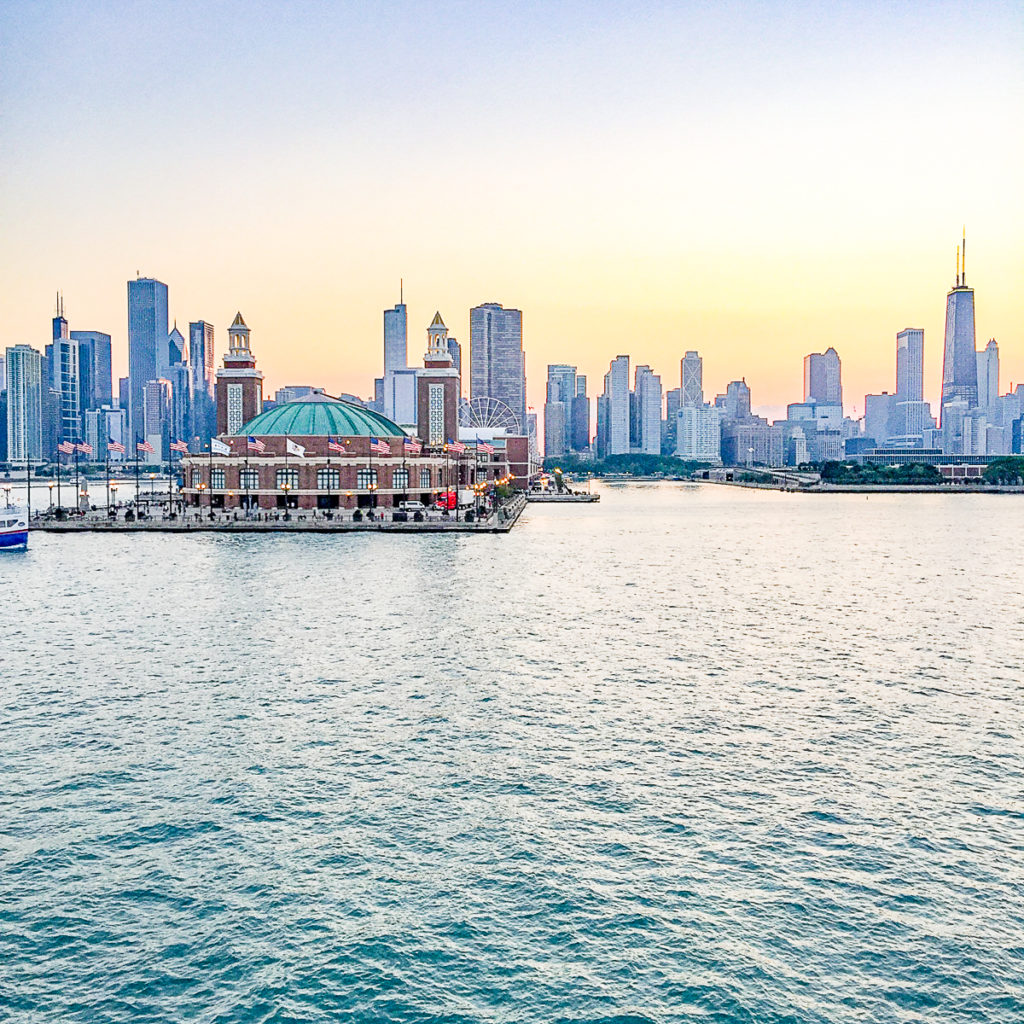
Navy Pier
Navy Pier is a big entertainment center located on a Lake Michigan pier in Streeterville. Highlights include the Chicago Children’s Museum, the Shakespeare Theater, a massive Ferris wheel, a carousel, and a beer garden. Navy Pier is home to many bars and restaurants and it’s also the starting point for many bike and boat tours. During the summer fireworks can be viewed from the pier on Wednesdays and Saturdays.
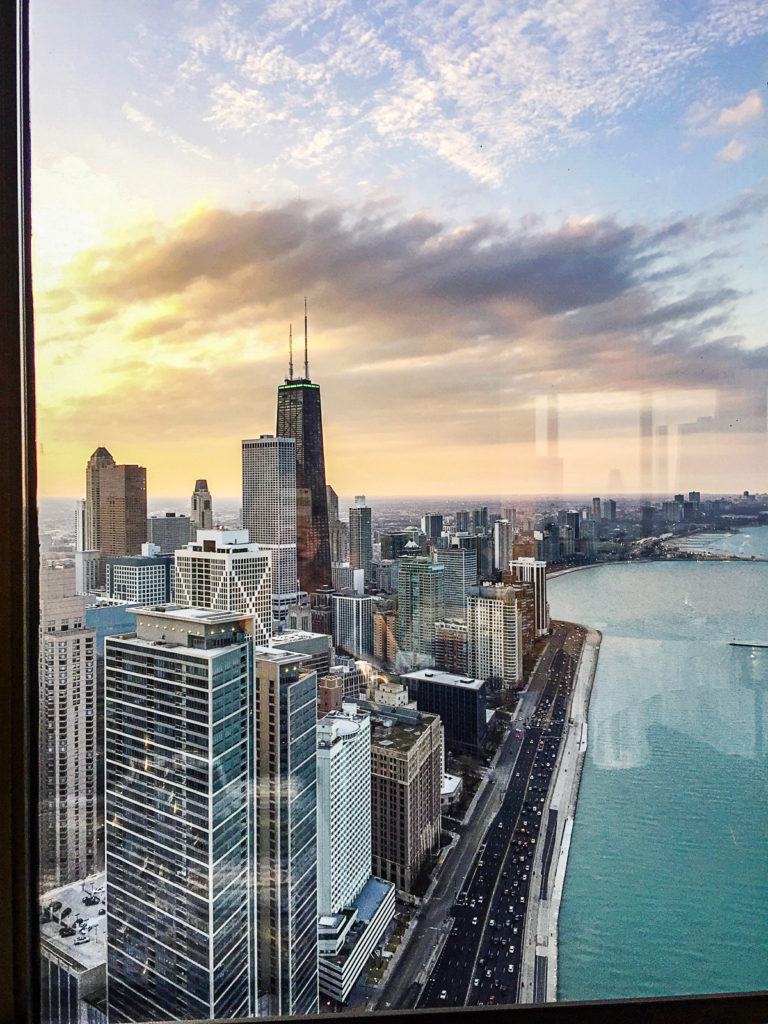
Hancock Tower
The Hancock Tower is located on the Magnificent Mile and is the fifth tallest building in Chicago. When it was constructed in the 1960s, it was the tallest building in the world.
The building’s viewing deck 360Chicago, provides a 360 degree views of Chicago. The space is home to Tilt, an experience where guests can experience tilting out over the streets below to get a unique view of the city below. Some people prefer to go to the top of the Hancock Tower instead of the Willis Tower so that they can enjoy the view of the Willis Tower.
Historic Water Tower
This white stone water tower on the Magnificent Mile survived the Great Chicago Fire of 1871. A large water pump was located within the structure, but now the building is used as a small gallery and a city tourism office. The water tower is located on Michigan Avenue just north of Chicago Avenue, in the middle of the Mag Mile. Admission to the gallery is free.
Calder’s Flamingo
This towering 53 foot tall vermillion colored steel sculpture by Alexander Calder is located in Federal Plaza in The Loop. Flamingo was unveiled in 1974 and is one of Calders “stabile” works. The term refers to the fact that the sculpture does not move, unlike Calder’s famed “mobile” works. The shade of vermillion red is named “Calder Red” and the sculpture was repainted in this exact hue in 2012.
The sculpture is a short walk from the Art Institute of Chicago, Grant Park, and Millennium Park.
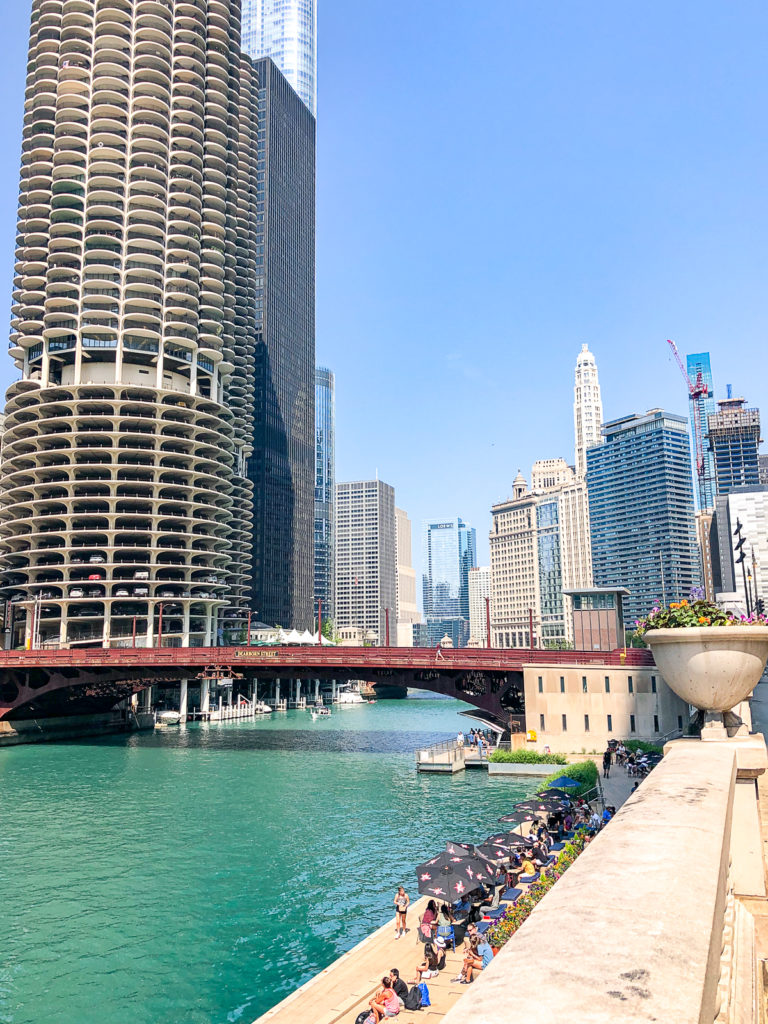
The Riverwalk
The Riverwalk is a newer addition to the city, but it is already a landmark. The Riverwalk is a pedestrian path that runs beside the Chicago River giving visitors views of some of the city’s most famed architecture including the Wrigley Building and Marina Towers.
There are several bars/restaurants on the Riverwalk including City Winery. It’s a popular spot for happy hour in the summertime.
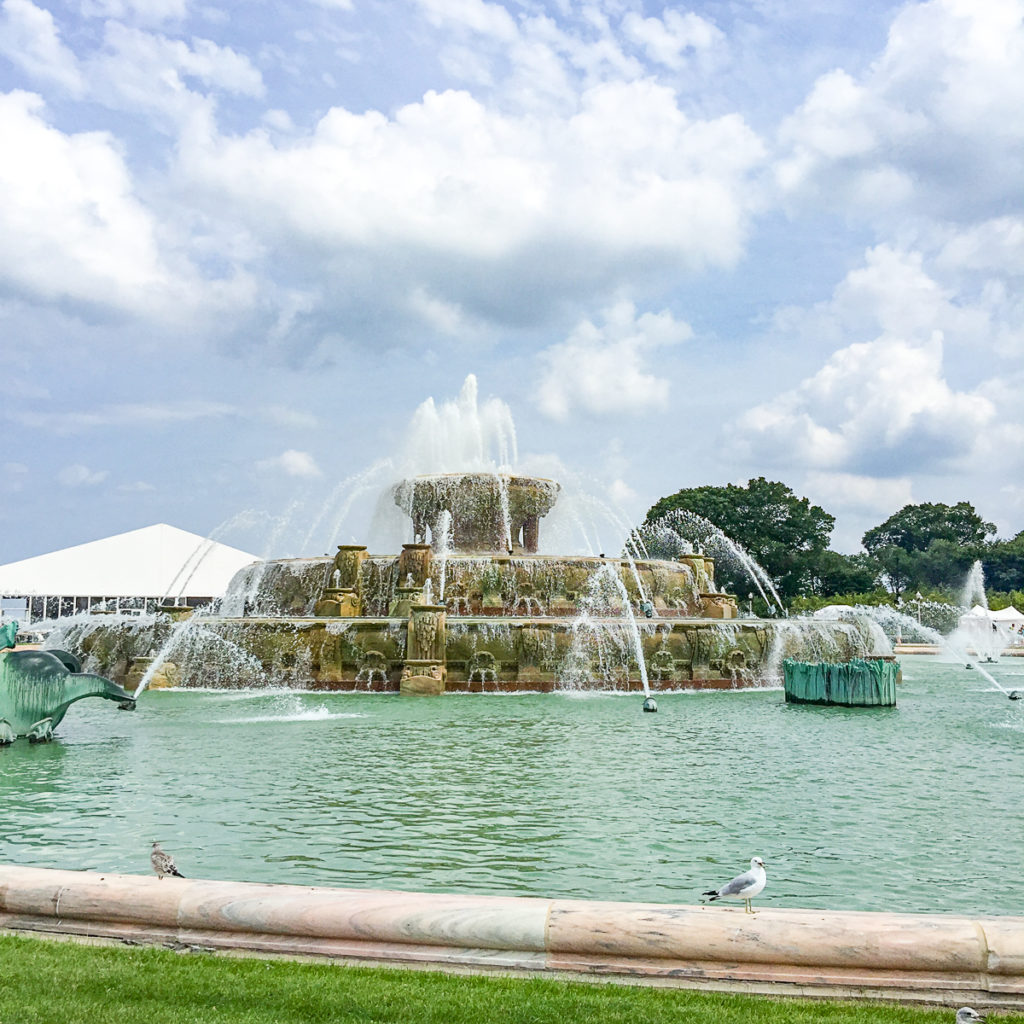
Buckingham Fountain
Buckingham Fountain is a Rococo-style fountain in the center of Grant Park. It was dedicated in 1927 and its design was inspired by a fountain at the Palace of Versailles. The fountain is a symbol of Lake Michigan. The four sets of seahorses represent the four states that border Lake Michigan (Illinois, Indiana, Michigan, and Wisconsin). The fountain was donated to Chicago by Kate Sturges Buckingham in memory of her brother Clarence Buckingham.
Frederick C. Robie House
The Robie House in Hyde Park is one of a handful of examples or Frank Lloyd Wright’s work in the Chicago-area. This home is considered to be one of the finest examples of Prairie Style Architecture, an American architectural style pioneered by Wright. The home was designed completely by Wright between 1909 and 1910. The plan included the interior and exterior architecture, furniture, and decorative elements.
The Frank Lloyd Wright Trust conducts several different guided tours of the house. Children under the age of 8 are not permitted on the tours.
Along with seven other sites designed by Wright, The Robie House is on the list of UNESCO World Heritage sites.
The Rookery
Located in The Loop’s financial district, The Rookery is a multistory office building originally designed by Daniel Burnham and John Root and later updated by Frank Lloyd Wright and then William Drummond. The building is known for its exceptional interior architecture. Tours of the Light Court and the Burnham Library are available through The Frank Lloyd Wright Trust.
Emil Bach House
A home in the Rogers Park neighborhood designed by Frank Lloyd Wright for Emil Bach in 1915. Like the Robie House, Wright designed the interior and exterior architecture although the style of this home marks some departures from the Prairie Style. The home was designated as a Chicago Landmark in 1977 and it was restored to its original appearance in 2013.
Tours are offered through the Frank Lloyd Wright Trust, and the home hosts weddings and events, and is available for vacation rentals.
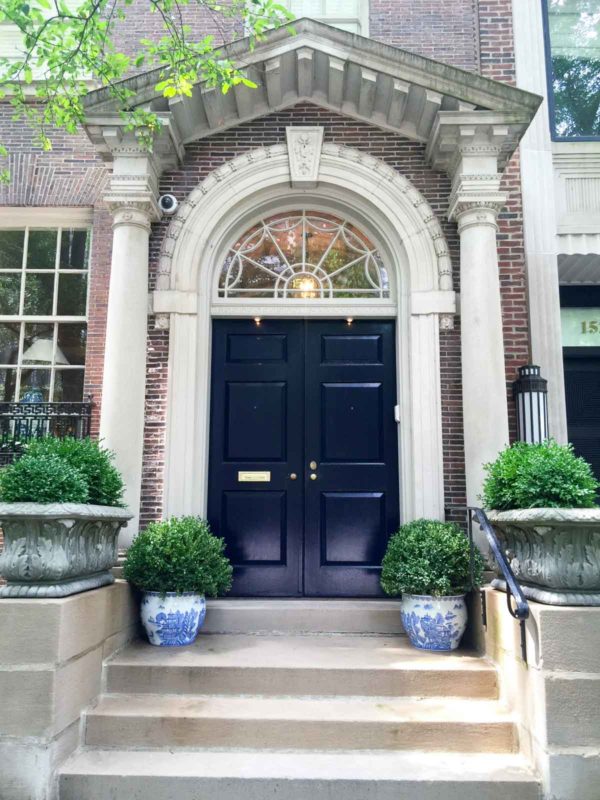
Astor Street District
The 1200-1600 blocks of Astor Street in the Gold Coast neighborhood have Chicago landmark status. This is considered to be one of the wealthiest and most beautiful residential areas in the city. Many of the homes were constructed between 1880 and 1940 and represent various revival styles. If you walk south to north, you will end up in Lincoln Park.

The Original Playboy Mansion
This isn’t on the official list of Chicago landmarks, but it is a fun slice of Chicago history. Built in 1899 and combining Gothic and Tudor styles, this 72 room mansion is located at 1340 North State Parkway in the Gold Coast Neighborhood. What makes this home especially interesting is that it purchased by Hugh Hefner in 1959 and was his primary residence during the 1960s and 1970s.
Hefner sold the building in the 1990s, it became a college dormitory, and was eventually converted into luxury condos. It’s just a block away from the Astor Street historic.
Biograph Theater
The Biograph Theater was designed in 1914 as a movie theater. It became infamous twenty years later when bank robber John Dillinger was shot dead outside after seeing a gangster movie.
Today the venue is called the Victory Gardens Theater and is devoted to producing new live theater work and contributing to American theater. Even though the name of the theater has changed, the front of the lighted marque remains the same. The theater is located on Lincoln Avenue in the Lincoln Park neighborhood.
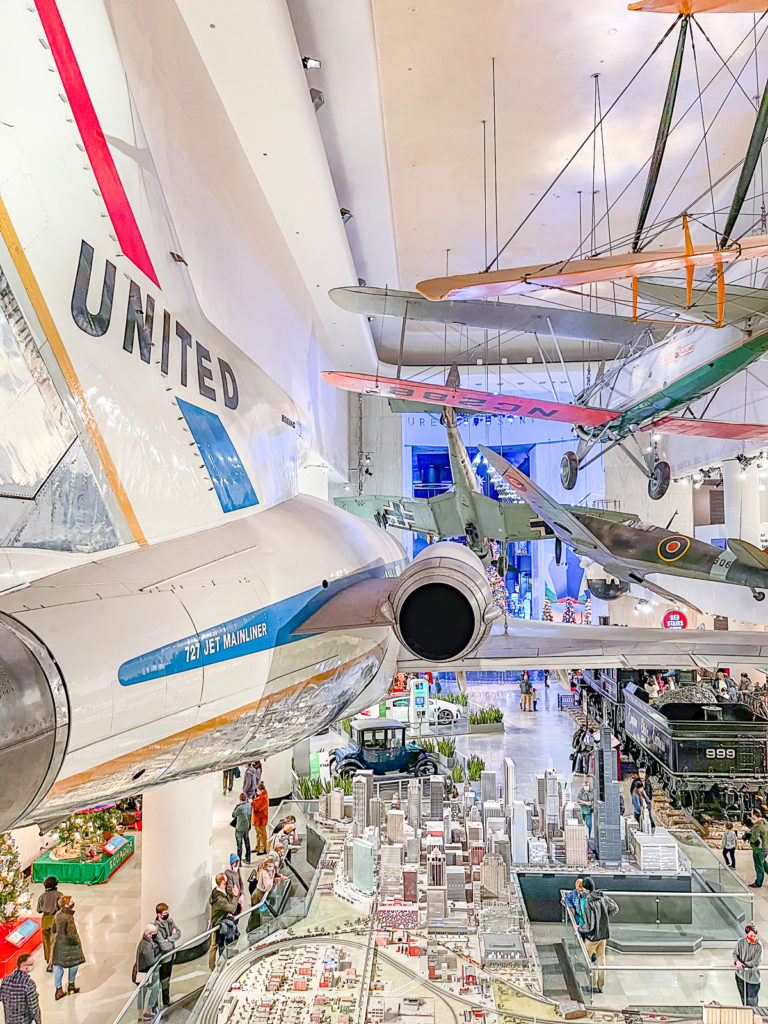
Museum of Science and Industry
This museum was designed by Charles B. Atwood as The Palace of Fine Arts at the 1893 World’s Columbian Exposition (the World’s Fair). It is one of only two buildings from the World’s Fair that is still standing today since many of the buildings were temporary structures. The museum is absolutely massive and contains exhibits on space, transportation, and farming. It also contains a German U-boat from WWII.
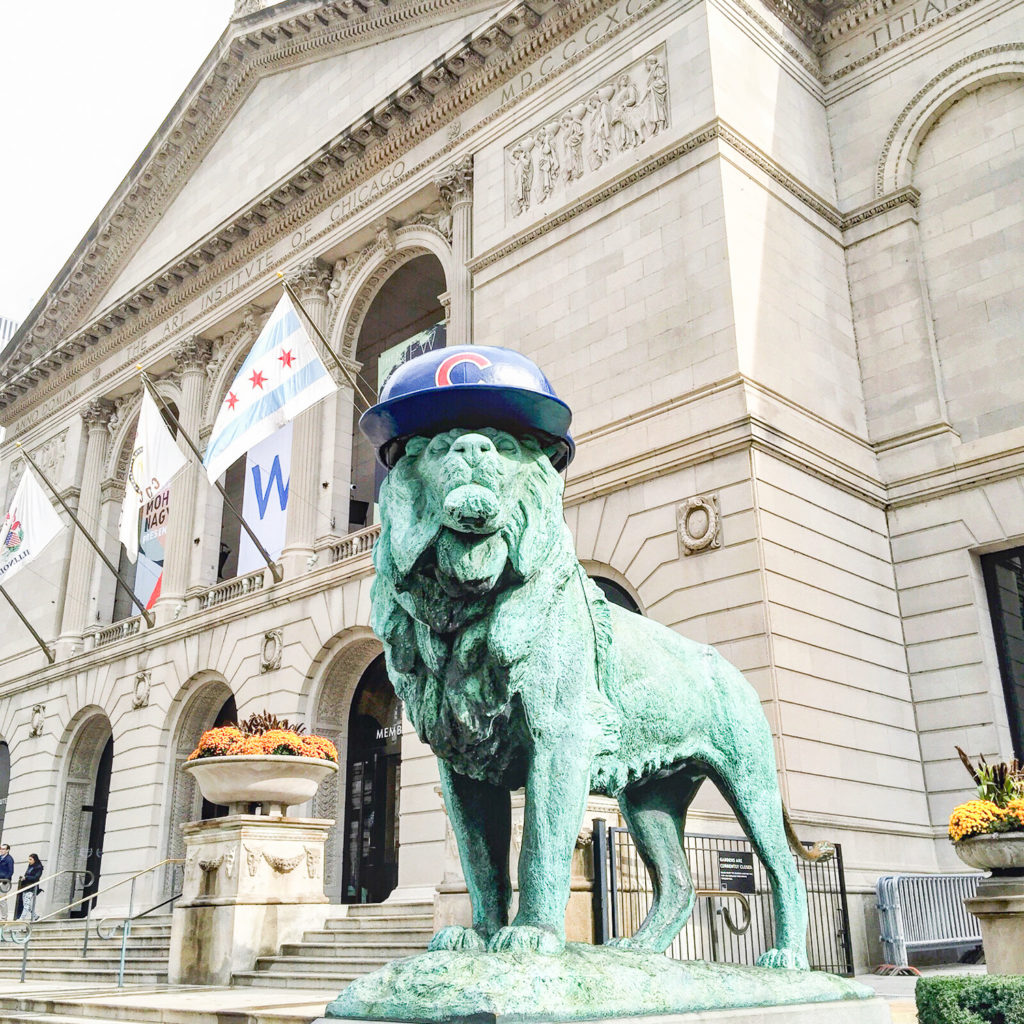
The Art Institute of Chicago
The Art Institute is the second building from the 1893 World’s Fair that still standing. It was built to be the World’s Congress Auxiliary Building with the intent that the AIC would occupy the space after the fair. The Beaux-Arts building was designed by the Boston-based firm of Shepley, Rutan, and Coolidge. The bronze lions were added to the steps of the building in 1894, a year after the museum opened. In modern times, the lions have been known to wear helmets for Chicago sports teams in the playoffs.
The Art Institute is located in The Loop and is a short walk from Cloud Gate and the Buckingham Fountain in Grant Park. It has a remarkable collection of Impressionist works and American art.
The Newberry Library
An independent research library dedicated to the humanities that overlooks Washington Square Park in the Gold Coast neighborhood. The Newberry Library was established in 1887 following a bequest by Walter Loomis Newberry, a successful Chicago businessman who died at sea in 1868. His will stipulated that if his daughters were to die without heirs, which they did, his funds were to be used to create a free public library. The library was established in 1887 and the current building opened in 1893. It was designed by the Newberry’s librarian William Frederick Poole and architect Henry Ives Cobb. It is an example of Spanish Romanesque architecture.
Today the library’s collections include 1.5 million books, 5 million manuscript pages, and 500,000 historic maps. It is not a lending library, but reading rooms are available. The library is free and open to the public, and hosts events and exhibits.
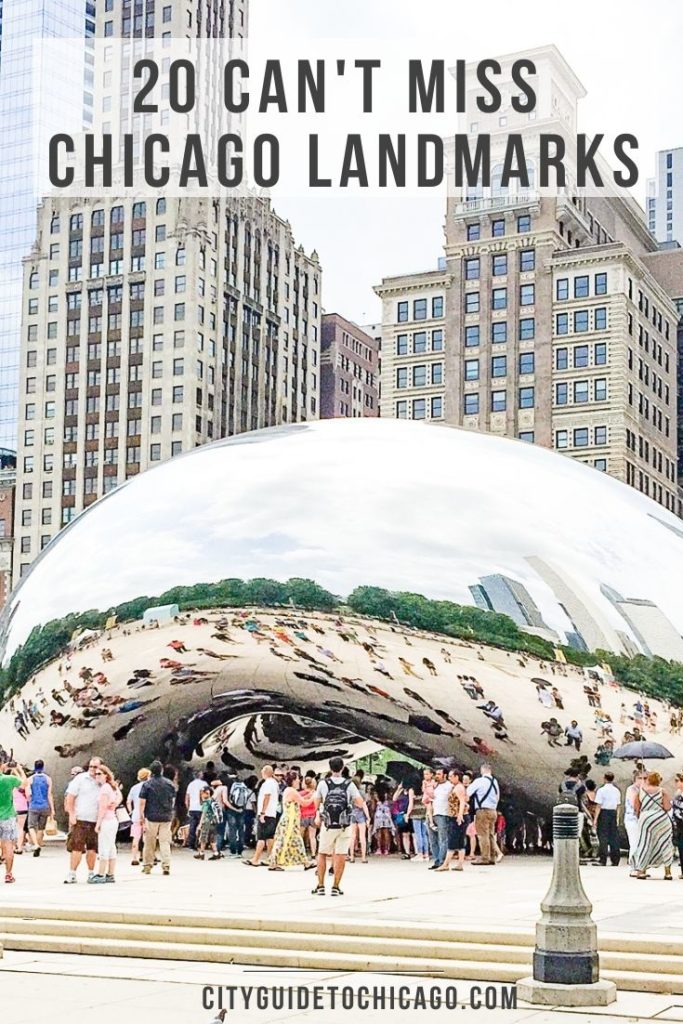

Things to Do in Rogers Park - cityguidetochicago.com
Sunday 24th of April 2022
[…] Italianate style and the Second Empire styles. It is a private residence that became a designated Chicago Landmark in […]
The Best Mexican Restaurants in Chicago - cityguidetochicago.com
Friday 25th of March 2022
[…] location beside Wrigley Field is an offshoot of the hugely popular Wicker Park taco joint. Big Star is known for serving […]
The Best Breakfast and Brunch Restaurants in Chicago
Wednesday 23rd of March 2022
[…] right next to the Chicago landmark Robey House, the Plein Air Cafe is a French-inspired cafe serving pastries and breakfast daily […]
Restaurants in Hyde Park - cityguidetochicago.com
Monday 21st of March 2022
[…] right next to the Chicago landmark Robey House, the Plein Air Cafe is a French-inspired cafe serving pastries and breakfast daily […]
The Best French Restaurants in Chicago - cityguidetochicago.com
Monday 21st of March 2022
[…] right next to the Chicago landmark Robey House, the Plein Air Cafe is a French-inspired cafe serving pastries and breakfast daily […]